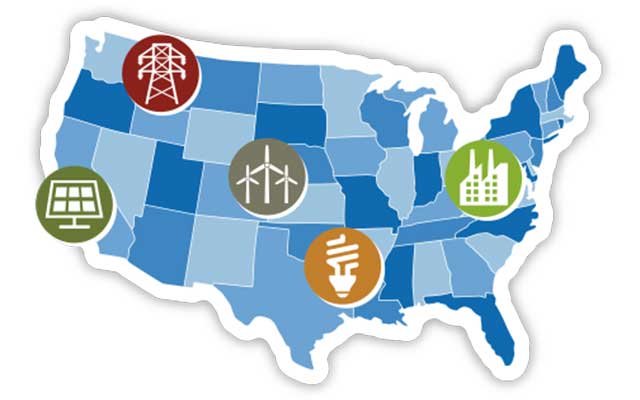US President Barack Obama announced new, stricter set of measures to cut carbon pollution and promote clean energy on Monday. The move has met with opposition from different sections of the polity.
Amid the voices of disagreement, a post on the White House blog discusses what it claims to be “myths” that are being propagated about the clean energy plan. Here are the key points discussed in the post.
First myth, the blog post says, is that the new standards will destroy jobs and hurt the US economy.
According to the post the standards would in turn spark innovation and drive investment in clean energy technologies and energy efficiency. It will create jobs and save families money and will also result in significant health benefits.
The blog post cites two unspecified independent studies which show that about 300,000 jobs would be created in the course of complete implementation of the Clean Power Plan.
Among carbon reduction programs already in place, the Regional Green House Gas Initiative trading program is expected to create 14,000 new jobs across nine states from 2014-2016.
The second myth, according to the post, is that the standards will lead to a spike in electricity bills.
In reality, it explains, these standards will shrink electricity bills by $85 each year for the average household, and save consumers a total of $155 billion from 2020-2030 by increasing energy efficiency and reducing costs in the electricity system.
The third myth discussed is that the standards will hit low-income communities the hardest.
The blog post points out that the plan would instead improve public health in such communities and across the country. It will prevent 90,000 asthma attacks in children and avoid 300,000 missed days of school or work per year by 2030.
The next myth listed is that the administration was waging a war on coal.
But, the post says, the shift from coal was being driven by competition from cheaper natural gas, lower cost renewables, and increased use of energy efficiency, and that the decline in coal jobs started well before President Obama took office.
EPA’s analysis of the Clean Power Plan shows that coal will play a significant role in the energy mix of the US for years to come. The administration has made significant investments in carbon capture and storage technology, according to the post.
The blog post goes on to list the next myth that the new standards threaten the reliability of electricity supply in America.
The post notes that EPA’s extensive analysis had shown that the standards could be implemented without impacting reliability.
“In fact, in response to recommendations by stakeholders, many aspects of the final rule are designed to preserve and maintain electric system reliability,” the post says.
“In addition to giving states more time to develop implementation plans, starting compliance in 2022, and phasing in the emission reductions gradually over an eight-year averaging period, the rule requires states to address reliability in their state plans. The final rule also provides a “reliability safety valve” to address any reliability challenges that arise on a case-by-case basis.”
The blog post also clarifies that it is a myth that the final Clean Power Plan drops energy efficiency.
The post says investment in energy efficiency will be a powerful strategy for compliance under the plan.
Although EPA has removed energy efficiency from the process of establishing state targets and focused on electricity supply measures the plan will drive significant investment in energy efficiency. “Energy efficiency remains eligible as a compliance tool for inclusion in state plans,” the post adds.
One myth finally discussed concerns denial of climate change.
The blog post avers that climate change is real and affecting every region of the country.
“Denying climate change might be good for the bottom line of polluters who fund bogus studies, but businesses and families across the country are already dealing with the effects of carbon pollution that causes climate change,” the post reads.
In the past three decades, the percentage of Americans with asthma has more than doubled, and the impacts of climate change — increases in smog, ozone, etc — are putting more and more Americans with asthma at risk of landing in the hospital.
And extreme weather events – from more severe droughts and wildfires in the west to more powerful hurricanes and record heat waves – are hitting communities across the country. Climate and weather disasters in 2012 cost the American economy more than $100 billion, the post further explains.
Ajith Kumar S
editor@greentechlead.com

